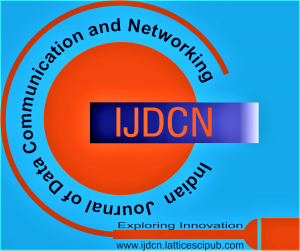Responsibilities and Selection Process of the Editorial Board:
- Editorial Board
- Responsibilities of the Editors and Editorial Board
- Selection Process of the Editorial Board
Editorial Board
The Editor-in-Chief processes the selection process of the Editorial Board with the input of Publisher1. Every 2-3 years, the Editorial Board undergoes a complete revision, with members either joining, stepping down, or continuing for another term. Sometimes, changes happen between revisions, such as when a member resigns. The Editorial Board incorporates several noteworthy positions, including Editor-in-Chief, General Editor, and Associate Editor.
The Editor-in-Chief selects the Editorial Board with input from the publisher. The Board undergoes revisions every 2-3 years, with members joining, stepping down, or continuing. The Board includes various positions, including Associate Editor, General Editor, and Editor-in-Chief. The Editorial Board needs to be geographically diverse, trustworthy, and firm for the journal’s progress. Geographic diversity, expertise, and research excellence are considered when selecting editors. Previous authors, Peer Reviewers, and Guest editors can also be appointed in the pool of reviewers. The responsibilities of board members are clearly outlined, and the post is voluntary and unpaid2,3.
Responsibilities of the Editors and Editorial Board:
As an editor (e.g., Editor-in-Chief, General Editor, Associate Editor), avoiding personal, financial, or other relationships that may influence your responsibilities is essential. Your primary responsibility is to cater to the reader’s needs and interests while protecting the rights of study subjects and animals. Additionally, you are responsible for maintaining the journal’s editorial content’s scope, establishing authorship and article submission policies, and maintaining a fair and efficient evaluation process for articles – whether they are accepted or rejected. You must also maintain confidentiality and integrity when dealing with authors’ work, make decisions confidently and stand behind them when appropriate, ensure the quality of research, handle errors and allegations of misconduct, protect editorial freedom, and ensure the journal’s future success1,3.
The Editor-in-Chief consistently monitors and assesses the calibre of the refereeing process of the General Editor, Associate Editor, and Regional Editor. Additionally, an annual evaluation of the Associate Editor team is conducted to ensure their proficiency aligns with current submission and research trends.
The General Editor is appointed by the Editor-in-Chief, who holds the journal’s activities and ultimately has the authority to accept or reject articles.
The Associate Editor is the editor who processes the articles as per the journal scope and publishing ethics, including the peer-review process, journal strategy planning, connections between reviewers and editors, and comments on revised submissions.
The reviewers or referees incorporate a group of adept researchers with expertise in the pertinent area appointed by the Editor-in-Chief with the input of journal authority for 2-3 years. The duties of the reviewers or referees include:
- Peer-review of the submitted articles according to the journal’s scope and policies.
- To organise the publication of thematic issues, equipping editorials for thematic issues tagged beneath their Guest Editorship.
- To invite and suggest new authors, peer reviewers, and conferences.
- To furnish reviewer conflicts, if any.
- To promote the journal among scholars and researchers.
The reviewers or referees are a group of promising and ambitious young researchers initiating their careers. They are given the unique prospect of confronting specialists in their specialisation. Once their assistance and enactment towards the journal are entirely levied, they are designated for 2-3 years, which can be revitalised through mutual understanding. The duties of the reviewers or referees include:
- Peer-review of the submitted articles according to the journal’s scope and policies.
- To solicit reviews/submissions of articles.
- To submit new articles to the journal.
Selection Process of the Editorial Board:
The Editorial Board must be diverse in geographic location to ensure journal enhancement. A successful journal requires a trustworthy and steadfast editorial board. The Prospective candidates will receive a detailed outline of their duties. Also, the editorial board will volunteer and provide unpaid responsibilities/duties. The Indian Journal of Data Communication and Networking (IJDCN) offer to apply for membership on the editorial board directly by submitting a membership form.
- Editors: The board’s size may vary year-wise. Editors are selected based on their geographical diversity, expertise relevancy, excellent research matrix, and eminence in essential research institutions.
- Reviewers: Past authors, peer reviewers, guest editors, or board-recommended candidates should be selected as reviewers.
References:
